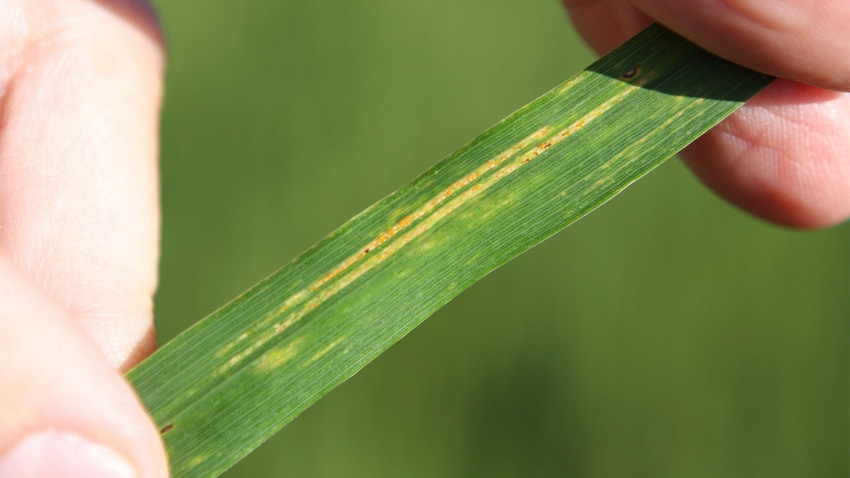
Farmers should scout wheat fields for stripe rust this spring and have a fungicide application at the ready.
Stripe rust of wheat was confirmed early this year in Louisiana, says Mandy Bish, University of Missouri plant pathologist. It’s too close for comfort as the spores of the pathogen (Puccinica striiformis f. sp. tritici) can be dispersed by the wind over long distances, ultimately infecting Missouri wheat fields.
If the disease takes hold, especially in a susceptible variety, the impact can devastate a wheat crop. In severe cases, yield loss can reach upward of 70%, according to the Crop Protection Network, a partnership with university Extension specialists from across the country.
To mitigate risk, Bish says farmers should consider a fungicide application for susceptible wheat varieties, especially if forecasted conditions are favorable for the disease.
Fungus likes colder environment
Unlike leaf rust or stem rust that like warm temperatures, stripe rust is what plant pathologists consider a cool-season disease.
Early infection before or at the flag leaf stage tends to happen when overnight temperatures are between 50 and 60 degrees F, and when heavy dew or irrigation are present, Bish explains. Infection slows as minimum air temperatures rise above 73 degrees.
Farmers can identify stripe rust as a pattern of yellow to orange pustules that develop parallel to leaf veins after tillering and result in the characteristic stripes, Bish says. It often looks like stitches made from a sewing machine. Prior to tillering, pustules develop in a random pattern on leaf surfaces.
Fungicides that work on stripe rust
Many fungicides can be used to control stripe rust, but timing is important.
Applications at flag leaf emergence help reduce yield losses, Bish notes. “This is earlier than optimal applications for wheat scab but may be necessary,” she adds. “In some instances, a second application for stripe rust may be warranted.”
The fungicide will protect the plant for up to 28 days. New growth will not be protected. If weather conditions are favorable for stripe rust and the crop is still susceptible to yield loss, consider a second fungicide application. Wheat fungicide efficacy charts are available on the Crop Protection Network website.
For sample confirmation, consider submitting symptomatic plants to the MU Plant Diagnostic Clinic.
Read more about:
Stripe RustAbout the Author(s)
You May Also Like






